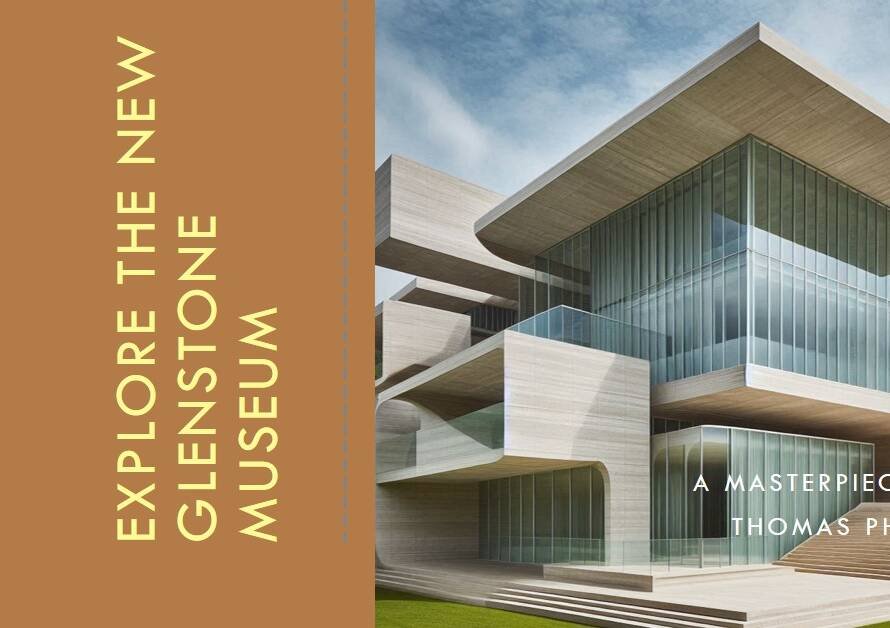
Table of Contents
Defining architectural history and its significance
Architectural history is the study of how buildings have evolved over time, and why they developed in the way they did. It encompasses a wide range of periods, styles, and cultural contexts, from ancient civilizations to modern times. By examining architectural history, we gain insights into the social, cultural, political, and economic forces that shaped our built environment.
The significance of architectural history lies in its ability to reveal layers of meaning behind architectural forms. It helps us understand how architecture reflects the beliefs and values of a society at a given time. For example, Gothic cathedrals with their soaring heights and intricate ornamentation speak to the religious aspirations of medieval Europe. On the other hand, sleek glass skyscrapers embody ideals of progress and corporate power that characterize our contemporary globalized world.
Through studying architectural history, we not only engage with physical structures but also delve into broader questions about human experience and identity. Architecture is an expression of our collective creativity and an embodiment of cultural memory. As such, understanding architectural history allows us to better appreciate different cultures’ contributions to our shared heritage while giving us critical tools to shape future spaces that will meet societal needs. In this ever-changing world where innovation thrives alongside tradition – or indeed challenges it – architectural history remains relevant as both a source of inspiration and wisdom for those who seek meaningful design solutions for the future.
The origins of architectural history
The origins of architectural history can be traced back thousands of years to ancient civilizations such as the Egyptians, Greeks, and Romans. These early cultures developed complex architectural systems that not only served functional purposes but also reflected the beliefs, values, and social structures of their societies. For example, the imposing pyramids of Egypt were meant to be grand tombs for Pharaohs, showcasing their power and immortality in the afterlife.
As time progressed, different regions and cultures began to influence one another’s architectural styles. The Roman Empire played a significant role in this exchange, spreading its architectural techniques throughout Europe during its vast conquests. The Romanesque and Gothic periods saw the emergence of stunning cathedrals across Europe that combined religious symbolism with innovative engineering techniques. By studying these diverse architectural influences over time, we gain insights into how societies have evolved and how architecture has both shaped and been shaped by cultural contexts.
Architectural history is not simply a chronicle of structures; it encompasses a multitude of disciplines such as anthropology, sociology, art history, and even psychology. It examines not only what buildings were constructed but why they were built in particular ways at specific times. This interdisciplinary approach allows us to understand how architecture embodies societal values while also providing practical solutions for human needs. By exploring the origins of architectural history, we begin to unravel complexities surrounding human ingenuity and our inherent desire to create spaces that reflect our aspirations for beauty and functionality.
Studying architectural styles and movements
One of the most fascinating aspects of studying architectural history is exploring different styles and movements that have shaped the built environment. From the grandeur of Gothic cathedrals to the simplicity of minimalist designs, each architectural style represents a particular era and cultural context. By delving into these styles and movements, one not only gains an appreciation for their aesthetic qualities but also a deeper understanding of how architecture reflects societal values and aspirations.
Take, for example, Neoclassical architecture, which emerged in the 18th century as a revival of classical Greek and Roman design principles. This movement sought to evoke a sense of order, reason, and harmony in response to the perceived chaos of Rococo extravagance. Its influence can be seen in iconic structures like Thomas Jefferson’s Monticello or the United States Capitol Building. Exploring Neoclassicism leads us to reflect on questions of power dynamics, nationalism, and the reimagining of ancient ideals within contemporary contexts.
Similarly intriguing is Modernism, which arose in the early 20th century as architects embraced new materials and technologies while rejecting historical ornamentation. This movement prioritized functionality over decoration and celebrated clean lines, geometric forms, and open spaces. Modernist buildings such as Le Corbusier’s Villa Savoye or Mies van der Rohe’s Farnsworth House embody an innovative approach to design that revolutionized architecture worldwide.
The role of technology in architectural history
From ancient civilizations to the modern world, technology has always played a crucial role in shaping architectural history. The innovative use of materials and construction techniques has not only revolutionized the design process but also pushed the boundaries of architectural possibilities. For example, the invention of concrete in ancient Rome allowed for monumental structures like the Colosseum to be built, while advancements in steel production during the Industrial Revolution paved the way for ambitious skyscrapers. These technological advancements have not only influenced architectural aesthetics but also contributed to social and economic changes.
Moreover, technology continues to transform architecture today. Digital design tools such as Computer-Aided Design (CAD) software enable architects to visualize and manipulate complex designs with ease. This not only speeds up the design process but also improves accuracy and precision. Additionally, sustainable technologies have emerged as a key aspect of contemporary architectural practice. Techniques like passive solar design, rainwater harvesting systems, and green roofs are becoming increasingly popular as architects prioritize environmentally friendly solutions.
In conclusion, technology has been an integral force throughout architectural history, enabling buildings to evolve from simple structures to feats of engineering marvels. Its influence can be seen in various elements including materials used, construction techniques employed, and environmental considerations incorporated into designs. As technology continues to advance rapidly today, its role within architecture will undoubtedly keep evolving as well – pushing boundaries even further and enabling architects to create ever more innovative and sustainable spaces that shape our future environment
Architectural preservation and conservation efforts
Architectural preservation and conservation efforts play a vital role in safeguarding the rich cultural heritage of our cities and towns. It goes beyond simply preserving old buildings; it involves a careful balance between maintaining the essence of historical architecture while ensuring functional suitability for modern-day use. Preservationists work tirelessly to restore and repurpose existing structures, breathing new life into aged edifices that stand as reminders of bygone eras.
A key aspect of architectural preservation is its emphasis on sustainable practices. With growing environmental concerns, preservationists strive to find innovative ways to minimize carbon footprints without compromising the integrity of historical buildings. For instance, they may integrate energy-efficient heating and cooling systems or utilize renewable materials during restoration projects. This intersection between history and sustainability not only allows us to revel in the beauty of architectural marvels but also highlights the importance of long-term environmental stewardship.
Despite these admirable efforts, there are challenges that face architectural preservation today. The fast-paced nature of urban development often clashes with ideas surrounding conserving historic structures, leading to debates over demolition versus adaptive reuse. However, these challenges prompt important discussions about balancing progress with heritage preservation – finding ways for old and new architecture to coexist harmoniously within evolving landscapes while retaining their respective value and significance. By actively engaging in these conversations, we can collectively shape a future where architectural history is preserved alongside progressive urban development.
The impact of architectural history on modern design
Architectural history exerts a profound influence on modern design, shaping the way we perceive and interact with buildings today. By studying the architectural achievements of past civilizations, designers glean insights into construction techniques, aesthetics, and cultural values that have stood the test of time. For instance, examining the grandeur of ancient Egyptian temples reveals their mastery in utilizing colossal stone blocks to create monumental structures that embody power and awe. This architectural tradition reverberates in contemporary buildings that employ large-scale elements to evoke a similar sense of grandiosity.
Moreover, architectural history underscores the importance of context in design. Understanding how societies adapted their built environment to environmental constraints or social needs helps architects appreciate how site-specific considerations can inform their designs. The emblematic example here is Frank Lloyd Wright’s Fallingwater: by merging his structure seamlessly with its natural setting through cantilevered terraces and strategically placed windows, Wright showcased a harmonious relationship between built form and nature—a concept deeply rooted in architectural history.
In addition to technical prowess and contextual sensitivity, designers also draw inspiration from historical styles for aesthetic purposes. Greek architecture’s emphasis on harmony and proportion continues to resonate in neoclassical structures today—think columns, pediments, and symmetrical facades. Similarly, Art Deco’s sleek lines reminding one of 1920s glamour still infuse some contemporary skyscrapers with an elegant allure. By referencing these historical styles while adapting them for current needs and tastes, designers pay homage to our collective heritage while forging new paths
Conclusion: Appreciating the value of architectural history
As we conclude our exploration into the world of architectural history, it is important to reflect on the invaluable lessons and insights it offers us. By appreciating architectural history, we gain a deeper understanding of the built environment that surrounds us, allowing us to better appreciate and engage with our surroundings.
One of the key values of studying architectural history is the insight it provides into different cultures and civilizations. Architecture acts as a visual representation of societal values, beliefs, and aspirations. Through studying different architectural styles across time and place, we can gain fascinating insights into how people in different eras lived their lives and expressed their identities through built form.
Furthermore, by delving into architectural history, we develop a critical eye for design. We learn to analyze not only aesthetics but also functionality, sustainability, and symbolism in architecture. This enhanced awareness allows us to make more informed decisions about our own built environment while fostering an appreciation for innovation within the field.
Ultimately, appreciating the value of architectural history goes beyond simply understanding buildings; it helps us understand ourselves as individuals living in a complex world constantly evolving with each passing era. The study of architectural history gives us a sense of connection to those who came before us while inspiring creativity for those who will come after. By embracing this knowledge, we become active participants in shaping the future while cherishing our rich past.



